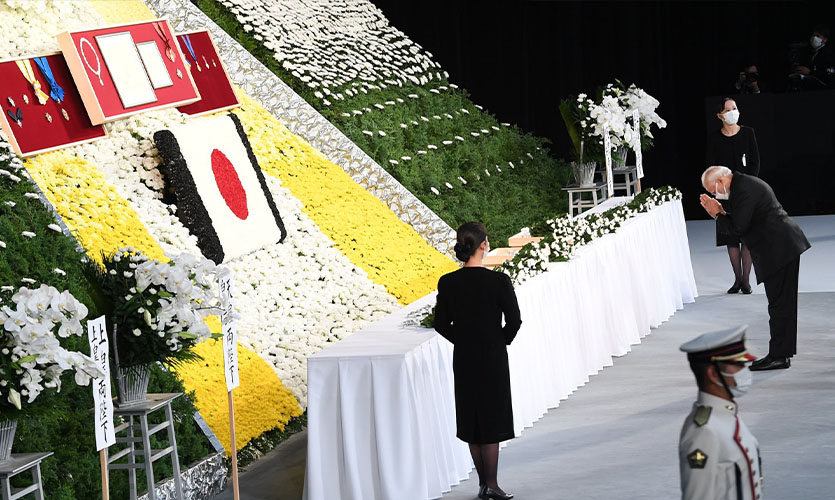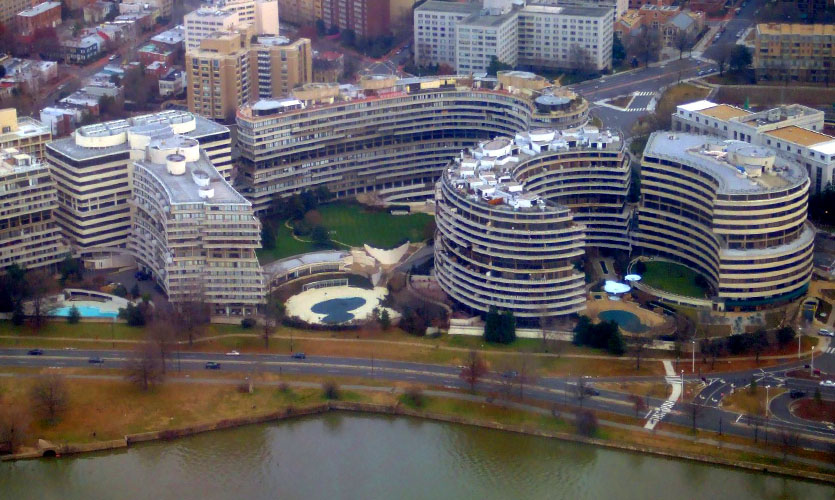A state funeral was held for former Japanese prime minister Shinzo Abe in Tokyo today, with Prime Minister Narendra Modi joining several other global leaders in paying tribute. A national day of mourning was observed in India on July 9, in honour of Abe, who was assassinated three months ago while making a campaign speech.
The former leader was presented with flowers as a tribute. His widow Akie carried his ashes into a Tokyo hall where thousands of mourners had gathered for the funeral, on Tuesday.
The event has encountered widespread controversy given its expense, and since state funerals are only performed for members of the Imperial family. This is just the second occasion that a politician has received a state funeral in Japan. A recent study revealed that 60 percent of Japanese people opposed the event.
The former prime minister overhauled Japan’s foreign policy, outlining an ambitious plan for significant improvement in relations with India. Shinzo Abe was one of Japan’s most important post-war leaders until he was killed on July 8. With two stints as prime minister, from 2006 to 2007, and later from 2012 to 2020, he held the record for the longest tenure in Japan. The chronic illness he had been suffering from resurfaced in August 2020, causing him to announce his retirement. The leader was well known for his economic policies – also called “Abenomics” – and for forming overseas partnerships.
The relationship between Abe and India during his time as president was one that he personally invested in. Throughout his career, he had a special rapport with PM Modi, which was evident on a number of occasions. Under Abe’s regime, India and Japan became more involved in Indo-Pacific architecture. In a speech he gave in 2007, when the Quad was formed, Abe outlined his vision for the “Confluence of the Two Seas”. Despite its collapse in October 2017, Abe’s Japan brought up the idea of reviving the Quad as Chinese aggression in the Pacific, Indian Ocean, and Indian borders intensified in Doklam. An East Asia summit in Manila on November 17, 2017, brought together officials from India, Japan, Australia and the US.
‘Confluence Of The Two Seas’: How Abe Redefined India-Japan Ties
Abe was honoured during a roadshow in Ahmedabad, after hosting Modi at his ancestral home in Yamanashi, the first such welcome given to a foreign leader. However, due to the demonstrations against the Citizenship Amendment Act, his scheduled trip to Guwahati, in December 2020, was cancelled.
At the 2014 Republic Day parade, he was the first Japanese prime minister to attend as the chief guest. His dedication to a connection with India was evident by the fact that he was being welcomed by a government that would be up for election in May 2014. While the groundwork for the ‘Global Partnership between Japan and India’ was built in 2001 and the agreement to have yearly summits was made in 2005, Abe quickened the pace of ties in 2012.
Abe’s successor will “have enormous shoes to fill”, remarked a South Block official when he announced his decision to retire. In January 2021, the Indian government announced that Abe would receive the Padma Vibhushan, the nation’s second-highest civilian honour.
Reportedly, PM Modi and Abe last spoke on May 24 this year, on the sidelines of the Quad Summit in Tokyo. According to Indian Foreign Secretary Vinay Kwatra, PM Modi and Abe have developed a personal connection of trust and affection as a result of their numerous meetings and communications over the course of more than a decade, beginning with the former Gujarat chief minister’s visit to Japan in 2007.
Foreign Secretary Kwatra claimed that Abe significantly contributed to the strengthening of India-Japan ties, turning what had previously been primarily an economic partnership into a broad, comprehensive, and strategic partnership that was crucial to the security of both countries and the security of the wider region.
In his meeting with current Japanese Prime Minister Fumio Kishida on Tuesday, PM Modi emphasised the late leader’s efforts to advance the two countries’ relationship, and his vision for an Indo-Pacific that is free, open, and inclusive.
“I am travelling to Tokyo tonight to participate in the State Funeral of former PM Shinzo Abe, a dear friend and a great champion of India-Japan friendship,” PM Modi had tweeted.
Abe’s first term, which spanned from 2006 to 2007, included a trip to India and a speech to the legislature. During his second tenure, he travelled to India three times – January 2014, December 2015, and September 2017. He surpassed Eisaku Sato’s previous record for the highest number of consecutive days in office at this time. No previous Japanese prime minister has made as many trips to India.
On his first visit to India as prime minister, in August 2007, Abe delivered the “Confluence of the Two Seas” speech, which laid the foundation for his idea of the Indo-Pacific. This notion has become one of the most defining cornerstones of India-Japan ties.
Read more: Pak’s Finance Minister Quits Amid Rising Economic Crisis










